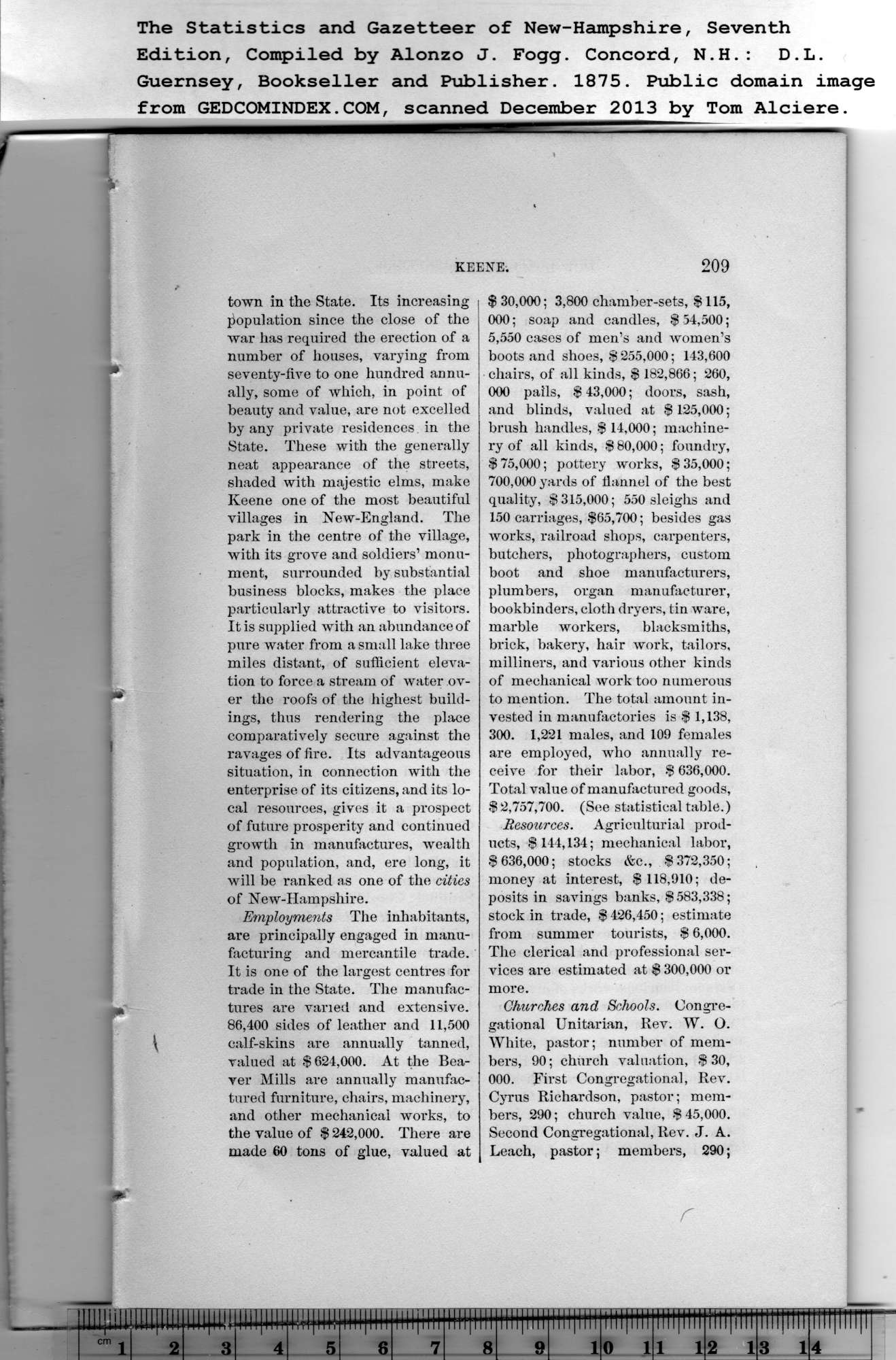|
town in the State. Its increasing
population since the close of the
war has required the erection of a
number of houses, varying from
seventy-five to one hundred annu-
ally, some of which, in point of
beauty and value, are not excelled
by any private residences in the
State. These with the generally
neat appearance of the streets,
shaded with majestic elms, make
Keene one of the most beautiful
villages in New-England. The
park in the centre of the village,
with its grove and soldiers1 monu-
ment, surrounded by substantial
business blocks, makes the place
particularly attractive to visitors.
It is supplied with an abundance of
pure water from a small lake three
miles distant, of sufficient eleva-
tion to force a stream of water ov-
er the roofs of the highest build-
ings, thus rendering the place
comparatively secure against the
ravages of fire. Its advantageous
situation, in connection with the
enterprise of its citizens, and its lo-
cal resources, gives it a prospect
of future prosperity and continued
growth in manufactures, wealth
and population, and, ere long, it
will be ranked as one of the cities
of New-Hampshire.
Employments The inhabitants,
are principally engaged in manu-
facturing and mercantile trade.
It is one of the largest centres for
trade in the State. The manufac-
tures are varied and extensive.
86,400 sides of leather and 11,500
\ calf-skins are annually tanned,
valued at $624,000. At the Bea-
ver Mills are annually manufac-
tured furniture, chairs, machinery,
and other mechanical works, to
the value of $ 242,000. There are
made 60 tons of glue, valued at |
$ 30,000; 3,800 chamber-sets, $ 115,
000; soap and candles, $ 54,500;
5,550 cases of men’s and women’s
boots and shoes, $ 255,000; 143,600
chairs, of all kinds, $ 182,866; 260,
000 pails, $ 43,000; doors, sash,
and blinds, valued at $125,000;
brush handles, $ 14,000; machine-
ry of all kinds, $80,000; foundry,
$ 75,000; pottery works, $ 35,000;
700,000 yards of flannel of the best
quality, $315,000; 550 sleighs and
150 carriages, $65,700; besides gas
works, railroad shops, carpenters,
butchers, photographers, custom
boot and shoe manufacturers,
plumbers, organ manufacturer,
bookbinders, cloth dryers, tin ware,
marble workers, blacksmiths,
brick, bakery, hair work, tailors,
milliners, and various other kinds
of mechanical work too numerous
to mention. The total amount in-
vested in manufactories is $ 1,138,
300. 1,221 males, and 109 females
are employed, who annually re-
ceive for their labor, $ 636,000.
Total value of manufactured goods,
$2,757,700. (See statistical table.)
Resources. Agricultural prod-
ucts, $ 144,134; mechanical labor,
$ 636,000; stocks &c., $ 372,350;
money at interest, $118,910; de-
posits in savings banks, $583,338;
stock in trade, $ 426,450; estimate
from summer tourists, $ 6,000.
The clerical and professional ser-
vices are estimated at $ 300,000 or
more.
Churches and Schools. Congre-
gational Unitarian, Rev. W. O.
White, pastor; number of mem-
bers, 90; church valuation, $30,
000. First Congregational, Rev.
Cyrus Richardson, pastor; mem-
bers, 290; church value, $45,000.
Second Congregational, Rev. J. A.
Leach, pastor; members, 290; |
